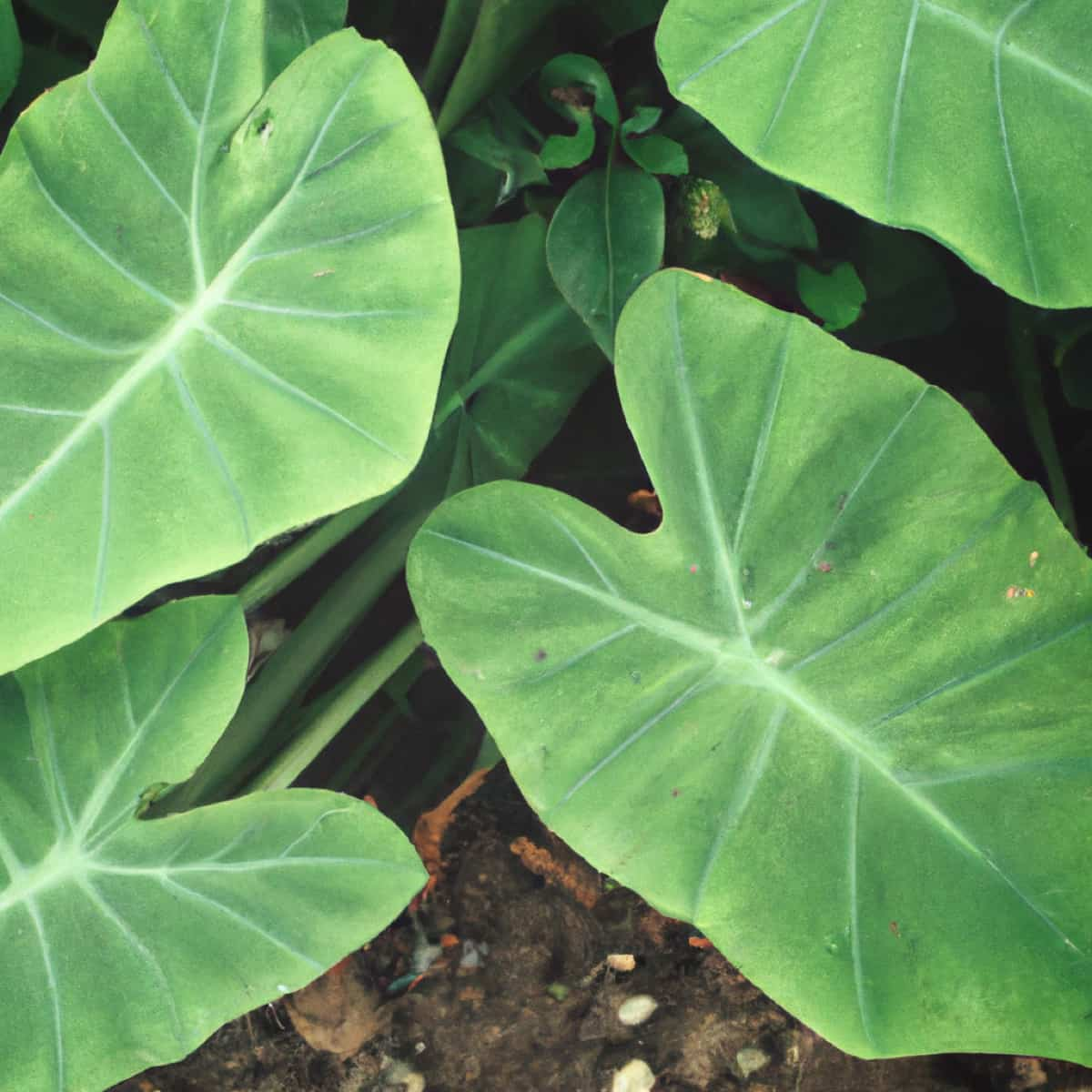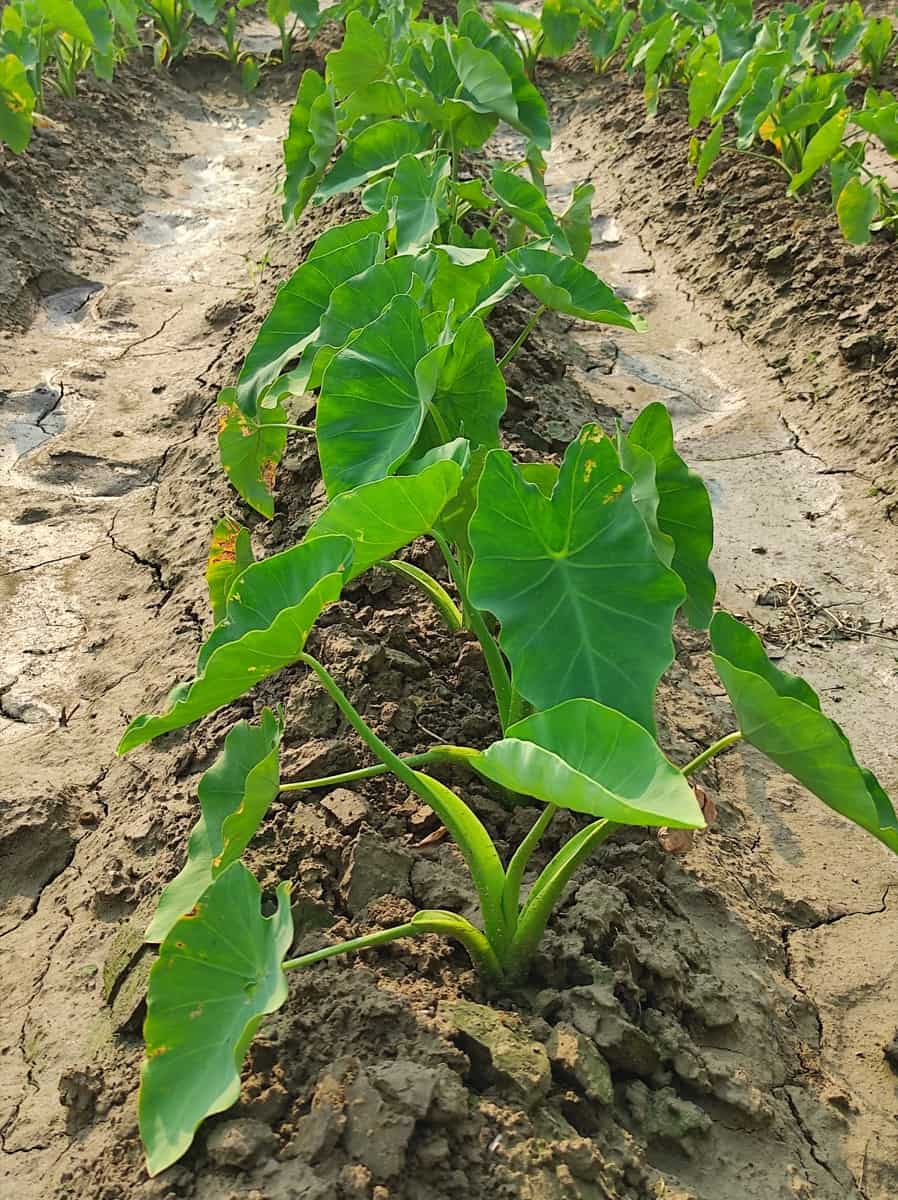Taro root plants are a popular choice among gardeners due to their delicious taste and versatility in cooking. However, like plants, they can be susceptible to various problems hindering their growth and productivity. Growers must know these common issues and how to address them effectively.

Growing Taro root plants can be a rewarding experience, but it’s important to be aware of the common problems that may arise. By understanding these issues and implementing the appropriate treatment and solutions, you can ensure the health and vitality of your Taro crop. With patience and perseverance combined with knowledge about common problems these plants face and their respective treatments and solutions, success is within reach.
8 Common Problems with Taro Root Plants
Preventing Taro Root Rot: Effective Control Strategies
Taro root rot can be a frustrating problem for gardeners and farmers alike. This fungal disease attacks the roots of Taro plants and can quickly spread throughout the entire crop. One key strategy is to ensure proper drainage in your Taro growing area. Excess water can create a favorable environment for the growth of the fungus. Add organic matter or sand to improve soil structure and allow for better water movement.
Another important step is to practice crop rotation. Avoid planting Taro in the same spot year after year, as this increases the risk of disease buildup in the soil. Instead, rotate with other crops not susceptible to Taro root rot. Also, selecting healthy seedlings or corms is crucial when starting your Taro plantation.
Regularly monitoring your plants is also essential in preventing root rot from spreading unnoticed. Remove any infected plants immediately and dispose of them from your growing area to prevent further contamination. Consider using biological controls such as beneficial microorganisms that suppress harmful pathogens naturally.
Dealing With Taro Leaf Blight: Causes and Remedies
Taro leaf blight is a common problem that can affect the health and productivity of Taro root plants. This fungal disease primarily affects the leaves of the plant. It starts as small water-soaked lesions that quickly enlarge into large brown or black spots with yellow halos. The main cause of Taro leaf blight is high humidity and wet conditions, which create an ideal environment for the fungus to thrive.
Overcrowding and poor air circulation can also contribute to its spread. Once infected, the disease can rapidly spread throughout a field if left untreated. To control Taro leaf blight, it is important to take preventive measures such as planting disease-resistant varieties, practicing crop rotation, and maintaining proper spacing between plants.
Regularly inspecting your plants for any signs of infection is also essential so that prompt action can be taken. If you notice any symptoms of Taro leaf blight on your plants, it’s crucial to act quickly to prevent further damage. Remove and destroy infected leaves immediately to reduce the risk of spreading spores. Fungicides may also be used as a last resort if other management strategies are ineffective.
Controlling Pests on Taro Root Plants Naturally
One effective method is using companion planting. By intercropping with insect-repellent plants such as marigolds or garlic, you create a hostile environment for pests. Another natural pest control option is neem oil. This organic pesticide disrupts the growth and reproduction of insects, effectively reducing their population. Dilute neem oil in water and spray it onto the leaves of your Taro plants. If you prefer a hands-on approach, try manually removing pests from your Taro plants.
To prevent future pest problems, maintain proper garden hygiene. Remove plant debris and weeds that may attract pests or serve as breeding grounds. Additionally, adequate air circulation around your Taro plants helps discourage the spread of insect-related diseases. Always monitor your Taro root plants closely for early signs of pest damage so you can take action promptly. These natural methods enable you to protect your beloved Taro crop without relying on harmful chemicals or pesticides.
In case you missed it: Discover the Top 10 Best Chicken Breeds for Gardens: Companions for Urban Homesteading

Managing Nutrient Deficiencies in Taro Root Plants
Nutrient deficiencies can be a common issue when growing Taro root plants. These deficiencies can manifest in various ways, such as stunted growth, yellowing leaves, or poor tuber development. It’s important to identify which specific nutrients your Taro plants are lacking. One effective method is to amend the soil with organic matter or fertilizers rich in the lacking nutrient(s). If your Taro plants lack nitrogen, adding compost or using a nitrogen-rich fertilizer will help replenish this essential nutrient.
Another strategy is foliar feeding – applying liquid fertilizers directly on the leaves of your Taro plants. This allows for quicker absorption of nutrients and helps address any immediate deficiencies. Overwatering or underwatering can hinder nutrient uptake by the plant roots. So, make sure you provide consistent moisture levels without waterlogging the soil. Regular monitoring of your Taro crop is key to identifying and addressing potential nutrient deficiency issues early on.
Preventing Taro Plant Wilting and Yellowing Leaves
Taro plants are known for their lush green leaves and vibrant growth. However, sometimes these plants can experience wilting and yellowing leaves, which can cause concern for gardeners. One common reason for wilting and yellowing leaves in Taro plants is overwatering. Taro roots thrive in moist soil, but excessive watering can lead to root rot and suffocation of the plant. It is important to ensure that the soil drains well and water the plants only when needed.
Another factor that can contribute to wilting and yellowing leaves is nutrient deficiencies. Taro plants require a balanced supply of nutrients such as nitrogen, phosphorus, potassium, iron, magnesium, and calcium. Regularly fertilizing the soil with organic matter or using a balanced fertilizer designed specifically for Taro plants can help prevent nutrient deficiencies. Pests can also cause stress on Taro plants leading to wilted or yellowed foliage. Natural methods like introducing beneficial insects or using insecticidal soap may help control pests without harming the environment.
Identifying and Treating Taro Leaf Spot Diseases
Taro leaf spot diseases can be a real headache for gardeners and farmers. These fungal infections can cause unsightly spots on the leaves, reducing plant health and productivity. Identifying these diseases early on is crucial to take appropriate action and prevent further damage. Treating Taro leaf spot diseases involves several strategies. First, removing any infected leaves or plants from the growing area immediately is important to prevent further spread of the pathogens. Proper sanitation practices, such as cleaning tools and equipment, also play a key role in preventing disease transmission.
Fungicides can be used as a control measure, but choosing ones specifically labeled for Taro plants is essential. Applying fungicides according to label instructions and at recommended intervals will help protect against future infections. In addition, promoting good airflow around the plants by spacing them adequately can help reduce humidity levels and minimize conditions favorable for fungal growth. Mulching around the base of Taro plants with organic materials like straw or wood chips can also suppress weed growth while maintaining soil moisture balance.
Managing Excessive Growth and Overcrowding in Taro Plants
One of the common problems that Taro root plants may face is excessive growth and overcrowding. When left unchecked, these issues can lead to stunted growth, decreased yield, and poor plant health. However, there are effective strategies for managing this problem. It’s important to provide adequate spacing between each Taro plant during planting.
In case you missed it: How to Grow Taro Root in Greenhouse: A Step-By-Step Guide for Seed to Harvest

This helps ensure proper airflow and prevents overcrowding as the plants grow. Additionally, regular pruning can help control excessive growth by removing any unwanted or excessive foliage. Another way to manage excessive growth is through proper fertilization. Providing balanced nutrients in the soil promotes healthy growth without encouraging overgrowth. It’s crucial to monitor nutrient levels regularly and adjust fertilizer application accordingly.
Regular weeding also plays a vital role in preventing overcrowding in Taro plants. Removing competing weeds reduces competition for resources and improves airflow around the plants. Monitoring irrigation practices is essential in managing excessive growth and overcrowding. Overwatering can promote rapid growth while compromising root health. It’s important to maintain a consistent watering schedule based on the specific needs of Taro plants.
Dealing With Taro Root Pests: Nematodes and Weevils
Taro root plants are not immune to pests, and two common culprits that can wreak havoc on your crop are nematodes and weevils. These tiny creatures may seem harmless but can cause significant damage if left unchecked. Nematodes feed on the roots of Taro plants, causing stunted growth, yellowing leaves, and overall poor plant health. Practicing good sanitation in your garden by removing any infected plant material is important to tackle nematode infestations.
Crop rotation is also beneficial since nematodes cannot survive without their preferred host plant for an extended period. Weevils are small beetles with long snouts that chew through Taro leaves and tubers. They lay their eggs on the foliage or in cracks of tubers, leading to unsightly holes and damage.
To combat these pests naturally, you can introduce predatory insects like ladybugs or parasitic wasps into your garden. Applying organic insecticides from neem oil or pyrethrum can also help control weevil populations. Remember to monitor your Taro plants regularly for signs of pest activity so that you can take action promptly.
Conclusion
Remember that prevention is always better than cure when caring for Taro root plants. Providing them with suitable growing conditions, including adequate sunlight exposure, well-draining soil enriched with organic matter, and regular watering, will greatly reduce the likelihood of encountering common problems.
By proactively addressing potential issues promptly and taking preventive measures like proper maintenance practices and regular inspection of your Taro root plant’s health status, you’ll enjoy healthy growth yields year after year.
- Feed Your Flock for Less: Top 10 Tips to Save on Chicken Feed
- Ultimate Guide to Ossabaw Island Hog: Breeding, Raising, Diet, and Care
- Hatching Answers: The Top 10 Reasons Your Chickens Aren’t Laying Eggs
- Eggs and Economics: Breaking Down the Cost of Raising Backyard Chickens
- Defend Your Greens: Proven Methods to Keep Iguanas Out of Your Garden
- Ultimate Guide to Cinnamon Queen Chicken: A Comprehensive Guide for Beginners
- Ultimate Guide to California Tan Chicken: Breeding, Raising, Diet, Egg-Production and Care
- Ultimate Guide to Marsh Daisy Chicken: Breeding, Raising, Diet, and Care
- 10 Types of Chicken Farming Businesses You Can Start for Profits